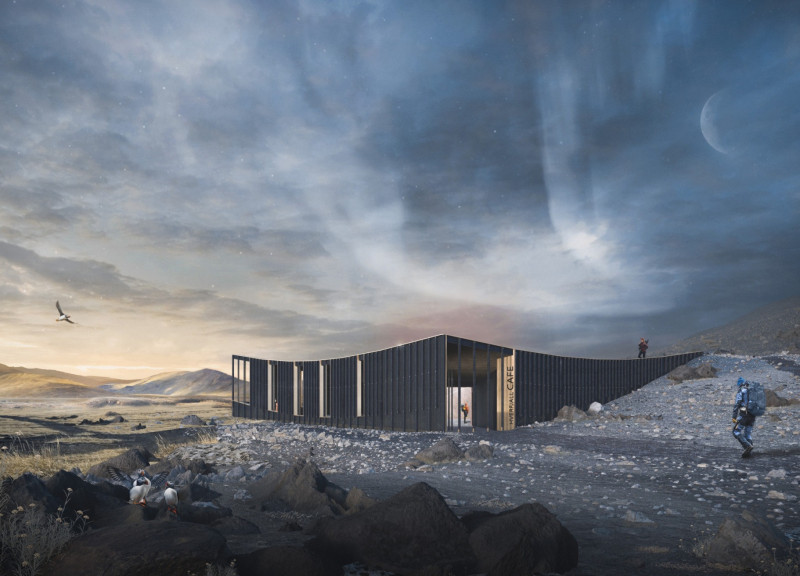5 key facts about this project
The Hverfjall Vulcano Café is an architectural project located at the base of the Hverfjall volcano in Iceland. It serves as a café offering food and beverages to visitors exploring the distinctive volcanic landscape. The project embodies a synergy between built and natural environments, incorporating elements that reflect the geographical and geological context of its location.
The café's primary function is to provide a space for relaxation and enjoyment while allowing guests to engage with the surrounding topography. The design promotes social interaction and enriches the visitor experience through its architectural elements, which enhance both functionality and aesthetics. The structure not only caters to tourists and locals but also serves as an intermediary space that connects the human experience with the grandeur of Iceland’s volcanic features.
Unique Design Approaches and Materiality
The architectural design of the café employs circular forms to create a harmonious relationship among various spaces. This layout fosters inclusivity, encouraging community gathering and exploration within the cafe. The spiral staircase leading to an observation area accentuates the verticality of the design and provides additional visual engagement with the landscape.
Materiality is a critical aspect of this project, where the use of wood for the façade integrates the café with its surroundings effectively. The choice of materials, including concrete for the foundation, aluminum for window frames, and steel for structural components, demonstrates durability while paying homage to traditional Icelandic construction methods. Incorporating terrazzo flooring promotes durability and is a design choice that enhances aesthetic continuity with natural elements.
Sustainability is also embedded in the architectural framework of the café. The project utilizes passive heating methods and local materials, aimed at minimizing its environmental impact. This commitment to sustainability aligns the café with contemporary architectural practices that prioritize ecological responsibility.
Functionality and Visitor Engagement
The interior of the café is designed to maximize the interaction between visitors and the landscape. Large windows and open spaces provide unobstructed views of Hverfjall, allowing patrons to appreciate the unique geology from within. The configuration of seating areas emphasizes a communal atmosphere while maintaining intimate spaces for individual reflection.
The café functions not only as a food and beverage outlet but also as an educational space, showcasing information about the volcanic region and its significance. This multifaceted role enhances the value of the café beyond standard service, making it a point of interest for learning about the geological and cultural context of Iceland.
For an in-depth understanding of this elegant integration of architecture and environment, readers are encouraged to explore the architectural plans and sections associated with the Hverfjall Vulcano Café. Analyzing the architectural designs and ideas further illustrates the nuances of this project and its contribution to contemporary architectural discourse in Iceland.






















































